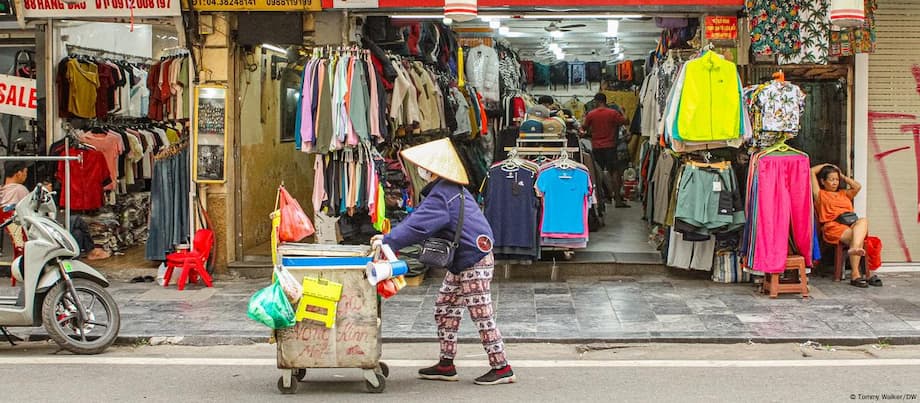Vietnam’s Tax Revolution: A New Era for Business and the Economy
Vietnam is on the cusp of its most sweeping tax reform in decades. Starting January 2026, the country will abolish its long-standing lump-sum tax system for small businesses, requiring all registered enterprises—no matter how small—to adopt a formal declaration-based tax regime. This dramatic shift is part of a broader economic overhaul designed to modernize Vietnam’s economy, boost state revenues, and propel the nation toward its ambition of becoming Asia’s next “tiger economy” by 2045.
For millions of small business owners, however, the reform brings uncertainty, new costs, and the challenge of navigating a more complex tax landscape. The government’s vision is bold: to create a fairer, more transparent, and globally competitive tax system that supports private enterprise and funds Vietnam’s infrastructure and social needs. Yet, as the deadline approaches, the question remains—can Vietnam balance its ambitious goals with the realities faced by its smallest entrepreneurs?
Why Is Vietnam Overhauling Its Tax System?
Vietnam’s economic transformation since the 1980s is nothing short of remarkable. Once among the world’s poorest countries, it has become a manufacturing powerhouse and lifted millions out of poverty. But as the export-led boom slows and the country faces new challenges—an aging population, climate risks, and global trade headwinds—Vietnam’s leaders are betting on private enterprise and institutional reform to sustain growth.
At the heart of this strategy is Resolution 68, passed by the Communist Party in May 2025. The resolution declares private businesses the “most important driving force” of the economy, aiming to elevate local firms above state-owned and foreign corporations. It promises deregulation, better access to capital, and legal protections for property rights and fair competition. But it also calls for a substantial increase in tax revenue to fund infrastructure, social security, and climate adaptation.
Vietnam’s tax-to-GDP ratio has slipped in recent years, standing at just 16.8% in 2023—well below the Asia-Pacific average of 19.5% and far from the OECD’s 33%. With public debt capped and spending set to surge (infrastructure spending alone is rising nearly 40% to $36 billion in 2025), the government must find new ways to fill its coffers. Reforming the tax system is seen as essential to both raising revenue and curbing corruption in notoriously opaque tax offices.
From Lump-Sum to Declaration: What’s Changing?
For decades, most of Vietnam’s 2 million household businesses paid taxes using a simplified lump-sum method. Taxes were based on estimated revenues, often determined through informal negotiations with local tax officials. This system was easy to use but prone to underreporting, favoritism, and corruption. Only about 6,000 businesses had adopted the more rigorous declaration system by early 2025.
From January 2026, the lump-sum system will be abolished. All registered businesses—regardless of size—must use the declaration method, which requires detailed accounting, formal bookkeeping, and regular tax filings. The government argues this will level the playing field, ensure everyone pays their fair share, and support the growth of a modern, competitive private sector.
But for small business owners, the transition is daunting. Many will face higher tax bills, the need to purchase cash registers and accounting software, and the challenge of training staff to comply with new rules. The reform comes as many sectors are still recovering from the COVID-19 pandemic and grappling with global trade uncertainties, such as recent US tariffs on Vietnamese goods.
Key Elements of the 2026 Tax Reform
The 2026 tax overhaul is not limited to the lump-sum system’s abolition. It is part of a comprehensive package of reforms affecting value-added tax (VAT), corporate income tax, special consumption tax, and personal income tax. The changes are designed to improve fairness, efficiency, and transparency, while aligning Vietnam’s tax system with international standards.
Value-Added Tax (VAT): Relief and Complexity
Vietnam’s National Assembly has extended a 2% VAT reduction for most goods and services until the end of 2026, lowering the standard rate from 10% to 8%. This measure, first introduced in 2024, aims to support businesses, stimulate consumption, and cushion the economy against global uncertainties. The VAT cut is estimated to reduce state revenue by over $1 billion, but authorities believe it will help stabilize production, create jobs, and improve living standards.
At the same time, new VAT rules require non-cash payments for all purchases to claim VAT credits, a move intended to prevent fake invoices and strengthen tax integrity. The threshold for VAT and personal income tax liability for household businesses has been doubled, so only those earning over VND 200 million (about $8,000) per year will be taxed from 2026. E-commerce platforms must now withhold taxes before transferring payments to sellers, ensuring fair treatment between online and offline businesses.
Corporate Income Tax: Stricter Incentives and Global Standards
The amended Corporate Income Tax (CIT) Law, effective January 2026, keeps the standard CIT rate at 20% but introduces stricter eligibility for tax incentives. Subsidiaries and affiliates of companies already receiving incentives can no longer automatically qualify, curbing the replication of tax breaks within corporate groups. The law also strengthens anti-abuse measures, aligning Vietnam with the OECD’s global standards on base erosion and profit shifting (BEPS).
Foreign investors and multinational corporations must now ensure that their local operations meet new economic substance requirements and that transfer pricing arrangements are robust. The changes are expected to make Vietnam’s investment environment more transparent and competitive, but may require companies to reassess their group structures and tax planning strategies.
Special Consumption Tax: Health, Environment, and Compliance
Vietnam’s updated Special Consumption Tax (SCT) Law, also effective from 2026, expands the list of goods and services subject to SCT, including cigarettes, alcohol, beer, certain vehicles, air conditioners, and sugar-sweetened beverages. The law aims to promote healthier consumer habits, support environmental protection, and improve tax management. Higher SCT rates are scheduled for products like tobacco and alcohol, with exemptions for goods used in export production or disaster relief.
The SCT reform is designed to be clearer and more transparent, with detailed classifications and advance notice of tax increases to help businesses plan. However, industries affected by higher taxes—such as alcohol and soft drinks—will need to adapt, potentially by reformulating products or shifting to healthier alternatives.
Administrative Simplification and Digital Transformation
One of the government’s top priorities is to reduce the time and cost of tax compliance. By 2026, authorities aim to cut compliance time and costs by 50% compared to 2024, with all eligible administrative procedures provided as fully online public services. The tax administration system is being digitized, with over 60% of procedures already available online and nearly 90% of submissions made electronically in 2024.
Personal tax management is also changing. Tax codes will be replaced by 12-digit personal ID numbers, and tax records will be linked with population, social insurance, land use, and banking data to detect risks and fraud more effectively. The government is encouraging feedback from businesses to refine procedures and reduce unnecessary burdens.
The Impact on Small Businesses: Opportunity or Overload?
While the reforms are intended to create a fairer and more efficient tax system, their impact on small businesses is profound—and controversial. For many, the end of the lump-sum system means higher taxes, new administrative costs, and the need to master complex accounting rules. Videos of distressed shop owners have gone viral, and reports suggest that up to 80% of shops in some markets have closed in recent months, though officials dispute that tax changes are solely to blame.
Small business owners must now:
- Purchase cash registers and accounting software
- Train themselves and staff in bookkeeping and tax compliance
- File regular tax returns and keep detailed sales records
- Navigate new procedures for issuing invoices and paying VAT
Some sectors, still recovering from the pandemic and facing global trade pressures, worry that the new demands could drive them out of business. Others fear that increased scrutiny and digitalization will expose them to more frequent audits and penalties, especially in a system where corruption and rent-seeking have long been problems.
Yet, the government argues that the reforms are necessary to ensure fair competition and support the growth of a modern private sector. By raising the income threshold for tax liability and expanding VAT exemptions, authorities hope to ease the burden on the smallest businesses while broadening the tax base among larger and more profitable firms.
Administrative Reform: Cutting Red Tape or Adding Layers?
Vietnam’s leaders have pledged to reduce red tape and make tax compliance easier. The digitization of tax procedures, integration with national databases, and the move toward one-time declarations are all intended to streamline processes. By 2026, the goal is for 100% of eligible procedures to be available online, with a 50% reduction in compliance time and costs.
However, the transition period is challenging. Many small businesses lack the resources or expertise to adapt quickly. The government is offering training and support, but the sheer scale of the change—affecting millions of enterprises—means that confusion and frustration are inevitable in the short term.
Broader Economic and Social Implications
The tax reform is just one piece of Vietnam’s broader economic transformation. The country aspires to join the ranks of Asia’s tiger economies by 2045, following the path of South Korea, Taiwan, and Singapore. Achieving this goal requires not only tax modernization but also investment in infrastructure, technology, and human capital.
Vietnam is investing heavily in high-speed rail, renewable energy, and digital infrastructure. The government is also expanding social protections and raising the retirement age to address the challenges of a rapidly aging population. Climate change is a pressing threat, with typhoons and rising sea levels posing risks to growth and poverty reduction. The World Bank warns that Vietnam could lose up to 14.5% of GDP annually by 2050 without decisive action.
Private enterprise is now at the center of Vietnam’s development strategy. The government aims to nurture at least 20 globally competitive private firms by 2030, offering easier loans, priority in government contracts, and support for overseas expansion. Institutional reforms—such as merging ministries and consolidating provinces—are underway to build stronger regional economies and reduce bureaucracy.
International Alignment and Investment Climate
Vietnam’s tax reforms are also designed to align with global standards and attract foreign investment. The introduction of the global minimum tax, stricter transfer pricing rules, and enhanced transparency are intended to reassure international investors and prevent tax base erosion. The government is learning from ASEAN neighbors, adopting incentive policies for research and development, and supporting high-tech sectors like semiconductors, AI, and green energy.
Despite these efforts, challenges remain. The business community is calling for flexible application of regulations, a consultative approach to penalties, and further reductions in taxpayer burdens. The success of the reforms will depend on effective implementation, transparency, and the government’s ability to build trust with businesses and citizens alike.
In Summary
- Vietnam’s 2026 tax reform abolishes the lump-sum tax system, requiring all businesses to adopt formal declaration-based tax filing.
- The reforms are part of a broader economic strategy to boost private enterprise, raise state revenue, and modernize the economy.
- Key changes include a 2% VAT reduction, stricter corporate tax incentives, expanded special consumption taxes, and a push for digital tax administration.
- Small businesses face higher compliance costs and new administrative burdens, raising concerns about closures and economic disruption.
- The government aims to reduce compliance time and costs by 50% by 2026, with all tax procedures available online.
- Vietnam’s broader ambition is to become Asia’s next tiger economy by 2045, requiring sustained reforms, investment, and climate resilience.
- Success will depend on fair, transparent implementation and the ability to balance state revenue needs with the realities faced by small businesses.












